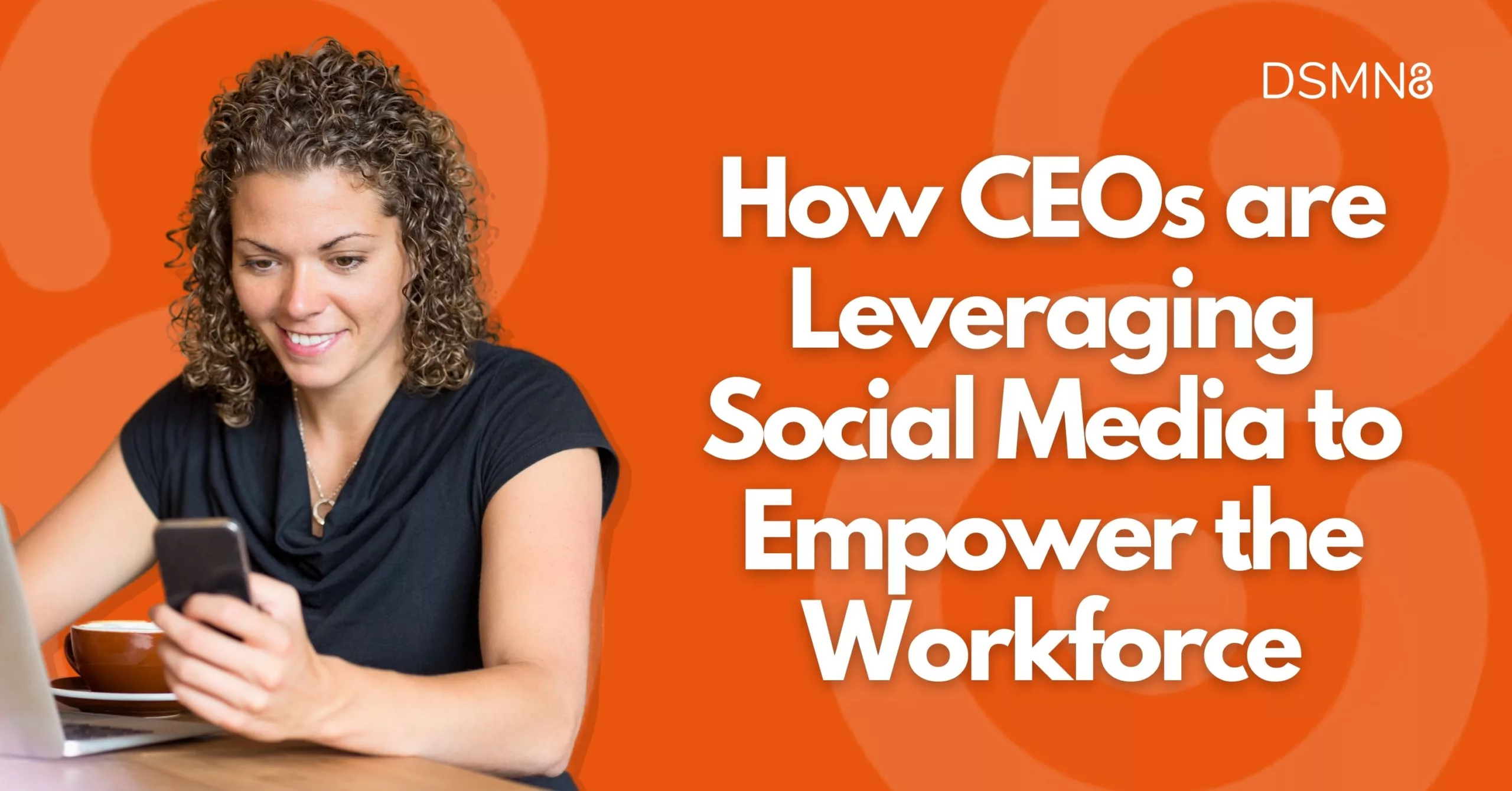
Last Updated: 15th March 2023
In the current business landscape, a CEO can be just as much a part of a company’s brand as the product or services that it offers. They are an invaluable voice within the company, and one that leverages tremendous influence.
This is especially the case for larger firms, as often a senior staff member’s move to the company will bring with it some media attention, but more importantly because the individual brings with them their own personal brand.
The CEOs personal brand is determined predominantly by companies they’ve previously worked with, the successes they’ve driven, and how they’re perceived publicly, whether in the press or on social media.
This is also true for stakeholders and anyone who has a vested interest in the company’s success.

T-Mobile’s former CEO, John Legere (image source)
Employee advocacy works because people trust people, and are 83% more likely to trust recommendations from friends and family over any other form of branded content.
An employee’s influence on your audience can hold more weight than your branded messaging. In fact, 53% of all global consumers see employees as the most credible sources for learning about a company.
When we discuss employee advocacy and employee influence on social media, we often think of those in less senior positions going the extra mile for their organization.
But consider this… if senior executives and those with a vested interest in the success of your company aren’t talking about you on social media, how can you expect your less senior employees to do so?
We’re going to breakdown the importance of senior leadership presence on social media, how this can influence your entire workforce, and how this can be managed in a time-effective manner.

Steven Bartlett, CEO & Founder of Social Chain, has a larger presence and following on social media than Social Chain itself.
The Social CEO
Right now, we are experiencing the era of the social CEO. Those pioneering it are using social media to leverage their influence and share company news, information, and content.
We’re living in a time where people are expressing a want for trust, authenticity and operational transparency from brands. This has lead to a rise in senior executives taking to social media to relay information in a more personal way.
Not only this, but those who hold senior leadership positions typically have larger followings than most employees, and often more than the company itself. Not only do they have more authentic influence, but their messages and content can reach and engage a much wider audience.
Take former T-Mobile CEO John Legere for example, who has a staggering 6.4 million followers on Twitter.
Contrast this with T-Mobile’s official Twitter page with 1.2 million followers.
Legere used the platform to show off his exuberant personality, while intermittently discussing T-Mobile products. Not only this, but John also used his platform to address customer queries and issues.
His likeable personality allowed consumers to put a face to the telecommunications brand and associate it with a person they like. After all, it’s what social media influencers have been doing for years now.
And yet, according to a recent Forbes article, 61% of Fortune 500 CEOs have no presence on social media at all.

Alan Barratt, CEO of Grenade, has been relaying company information via his personal profile during this pandemic.
Influence Starts at the Top
It’s no secret that your employees will look to senior management for guidance and leadership in many situations. So it is imperative that if you’re looking to your employees to utilize social media for work purposes and to disseminate company content, senior leadership must already be doing this.
Why? It’s quite simple really, senior leadership must lead by example, especially when it comes to adopting new initiatives like an employee advocacy program.
A good leader is not just one who leads the business forward, but one who moves the workforce in the same direction.
Consider a scenario wherein a Chief Revenue Officer is asking Account Executives, SDRs, and all salespeople to participate in the company’s employee advocacy program and to utilize social selling.
Will they believe the practice is effective or necessary if they don’t see the person in charge doing the same? The likely scenario is that they won’t.

Gary Vaynerchuk, Founder and CEO of VaynerMedia (image source)
Managing Social Media Presence in Senior Roles
There’s no doubt that the reason why 61% of Fortune 500 CEOs aren’t on social media is that they feel they simply don’t have the time for it and it would be a distraction.
Well, while we stress the importance of senior executive presence on social media, we hear that.
There’s no denying that building and maintaining a large audience on social media can be a lengthy process.
Accumulating a following typically takes some time and effort: sourcing content, deciding what to post, who to engage with… it can be time-consuming for sure.
But it doesn’t have to be.
An employee advocacy program allows all employees to share pre-approved company content onto their chosen social media feeds with the push of a button.
DSMN8 even offers an automation feature which, when switched on, will automatically share the latest pre-approved company and industry news for you.
These settings are fully customizable too, so you can control your content output and limit it to, say, three posts a week. No spam here!
Something we see a lot of senior management doing now, particularly at C-Level, is sharing company culture content and celebrating successes.

The Impact on Employee Advocacy
At DSMN8, we’ve worked with companies of all sizes all over the world over the years, and we’ve learned a few things about how to successfully implement and guarantee the success of an employee advocacy program.
From Chinese tech-titans Huawei to out-of-home advertising companies like OUTFRONT Media, there’s always one crucial factor of the program that gets it off to flying start and ensures continued success and longevity…
If you hadn’t yet guessed, we’re talking about senior leadership buy-in.
What we’ve seen from our clients is that the most successful platforms always start from the top and the success is replicated further down the line across the board.
In the launch phase, it could be a C-Level employee who sends out the invites. After all, who ignores an email from their CEO? Senior leadership could congratulate employees for their sharing, thank them for their participation and offer recognition for their efforts.
The continued presence within the employee advocacy platform is vital. If senior staff begin to halt their shares and communications, employees would be forgiven for believing that the program is either not necessary or no longer of value.
What we’ve seen in recent months is C-Level staff and department heads utilizing our video announcements feature to send updates to keep staff informed during these uncertain times.
The tides are shifting on what people want from brands. The world’s biggest brands are taking a more personal approach by handing the communications reigns to the more trusted voices of their company: employees. Whether for an employee advocacy program or to push your brand in a more human direction, senior leaders need to be active on social media in order to lead their workforce by example and effectively relay company news and values.
To learn more about the importance of senior leadership on social media and how to effectively utilize it, check out The Ultimate Guide to Employee Influencers!
Lewis Gray
Senior Marketing Manager and Employee Advocacy Program Manager at DSMN8. Lewis specialises in content strategy, growing brand visibility and generating inbound leads. His background in Sales lends itself well to demand generation in the B2B niche.

